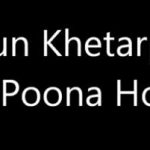THE SNOW WARRIORS
A SAGA OF COURAGE AND ENDURANCE THAT SAVED LADAKH
August 1948; The Indian and Pakistani Armies had been locked in a bloody contest over Kashmir for almost a year. Skardu, the gateway to Ladakh, was under siege by Pakistani forces for the past six months with Lieutenant Colonel Sher Jung Thapa and his 2-company strong Jammu & Kashmir Infantry tenaciously holding on against heavy odds. This was a period when, with the Indian Army failing to reinforce Skardu adequately and the Pakistanis attempting alternate approaches to Leh and the treasures of the Budhist Monasteries there, the Ladakh Region, cut off from the rest of the country and the Kashmir Valley by snow, faced imminent danger of falling into enemy hands. By May the Zojila Pass between the Kashmir Valley and Ladakh had fallen to the Pakistanis and they were already approaching Leh through Nubra Valley along the Shyok River, avoiding Skardu still in Indian hands. Into this hopeless scenario there emerged a bunch of heroes who would turn the tables against the enemy and save Ladakh from the fate that had befallen Gilgit.
While Sher Jung Thapa was scripting a legend with his defence of Skardu in the peak of winter in early 1948 buying precious time for Indian Army to shore up its strength in Ladakh, the region remained inaccessible with Zojila Pass, though still in Indian hands, closed by snow fall. There was yet no airfield in Ladakh and no solution seemed to emerge to get help across to Leh. That is when a young Budhist officer from Lahaul, the Himalayan region between Manali and Rotang Pass, Major Prithvi Chand of the 2nd Dogras, stepped forward to lead a mission across Zojila on foot with a small caravan of men and mules carrying arms and ammunition in mid February. No one thought it was a sane idea, but Prithvi Chand’s all-volunteer force comprising Captain Khushal Chand as his Second-in-Command and a JCO, Subedar Bhim Chand and 15 soldiers, all of them mountain men and Budhists, was determined to get help across to their fellow religionists in imminent peril of being swarmed by the enemy. Incredibly, they made it through, arriving in Leh by mid March. Soon two platoons of the State Forces led by another young officer Captain Badri Singh repeated their feat and fetched up on their heels.
With only a skeleton garrison of 33 soldiers available other than his own and the new arrivals, they too scattered in sections guarding far-flung posts, Prithvi Chand wasted no time in raising a local militia. Enrolling volunteers from the Nubra Valley he and Subedar Bhim Chand set about training them in a crash programme, while other officers and available troops were assigned to deal with enemy threats. One of the earliest and most enthusiastic recruits to this volunteer force they named ‘Nubra Guards’ was a young lad of 17 by the name of Chhewang Rinchen who had left his schooling to join the force. Right from the beginning he displayed exceptional leadership traits and initiative helping to enlist many more volunteers from among his friends. After a month-long training the Nubra Guards were deployed along the northern bank of Shyok River to stem the enemy thrust from that axis. With news arriving of Pakistanis having reached Skuru Village, the Nunnus, as the Nubra Guard volunteers were called, under the command of Subedar Bhim Chand set out on a trek across the hazardous Khardung-la to come to grips with the enemy, which they did in ten days.
Under fire Rinchen emerged a natural leader drawing first blood when he hit the enemy picket at La Churuk with a 28-man force. The Pakistanis were caught off guard being attacked from a direction they least expected to be. The post was wiped out with no survivors and Rinchen and his men had a rich haul of much-needed arms and ammunition from the enemy stockpile. Subsequently as another enemy threat loomed over Leh from Kargil, the main body of the Nubra Guards was pulled back, leaving Rinchen with barely two dozen men to defend the Nubra Valley. They did this admirably well, using their intimate knowledge of the mountains to fool the enemy into believing that they faced a much larger force, often by clever tricks like firing from multiple points and lighting fire on various peaks. The Pakistanis eventually got the wind of it and, counting a bunch of militiamen as no great threat, they set about preparations to cross the Shyok River to resume their advance. Rinchen who was informed of this by the local Ladakhis promptly laid an ambush. The enemy boarded their boat at 10 one morning. Rinchen and his group waited for the boat to be midstream before opening up with devastating fire. Trapped and shot to smithereens the entire lot of Pakistanis perished by bullet wounds or drowning. That was the last time they attempted to cross the Shyok. Rinchen deservedly was promoted to the rank of Jemadar, the equivalent of present-day Naib Subedar.
On 13th of August 1948 Sher Jung Thapa’s heroic last stand at Skardu came to an end. The handful of officers and men of his still alive were shot out of hand by the blood-thirsty raiders, while the lives of Thapa and his orderly alone were spared; believed to have been on an explicit order from General Sir Douglas Gracey, the Commander-in-Chief of Pakistan Army who had been, as a young officer, the Adjutant of the Gorkha Regimental Centre at Dharamsala, where young Thapa was a bright recruit under training. Gracey had taken it up on himself to train and encourage the youngster to take up a commission in the J & K State Forces.
Though Skardu was lost, Sher Jung Thapa by holding the enemy there for six months had earned his rightful place in history as the first among the handful of saviors of Ladakh. Those six months had given the Indian army the crucial time to bolster its presence in Ladakh and denied Pakistan an easy and unopposed advance into the region. On 24 May 1948 an Indian Air Force Dakota piloted by Air Commodore Meher Singh landed at an improvised airstrip in Leh with troops to reinforce the town; the first ever aircraft to touch down in Leh and the first wheeled transport most Ladakhis had seen in their lives. Accompanying the troops on board was Major General Thimmayya. The Pakistanis who had earlier in the month taken Zojila Pass and advanced up to Nimmo in Ladakh by then turned tails and ran. Their free run into Ladakh was over. Following a company of the 2/4 Gorkhas which was the first to be airlifted to Leh, a company of 2/8 Gorkhas was brought in. In August another company of 2/8 Gorkhas followed while the rest of the battalion trekked overland from Manali with a mule train carrying supplies. Yet another mule train fetched up in September. In spite of all that, with the constraints of transportation the Leh Brigade never rose to more than 2-battalion strong. This shortage of manpower was more than made up by the Nubra Guards who with their unorthodox tactics kept playing a significant role in keeping the enemy at bay.
Chhewang Rinchen found himself in the thick of action again during September when he was tasked with capturing an enemy stronghold at a remote locality called Lama House. It took him and his group four days of strenuous trekking through mountainous country scaling peaks as high as 17000 feet to get to the objective. Once again they decimated most of the enemy platoon while the rest deserted the post in disarray. The fighting saw Rinchen engaged in hand-to-hand combat with an NCO of the Gilgit Scouts, Sergeant Major Mota Hasan, whom he dispatched with bayonet. The captured sten gun of the NCO adorns the Hall of Fame at Leh. With less than a week for the war to end Rinchen staged one last attack in last week of December in Leh Tehsil area after a 6-day march through mountainous terrain featuring peaks more than 21000 feet high which saw his men suffer heavily from frostbite. Nevertheless they successfully brought down two enemy posts. The war ended on 1st January 1949 with the ceasefire coming into being.
Chhewang Rinchen, later to be commissioned into the Indian Army to rise to the rank of Colonel, became the youngest Indian soldier to be awarded Maha Vir Chakra, the nation’s second highest gallantry award. His mentor, Major (later Colonel) Prithvi Chand as well his Second-in- Command, Captain (later Major) Khushal Chand were also accorded the same honour while the gallant JCO, Subedar Bhim Chand, was awarded Vir Chakra and bar. The hero of Skardu, Lieutenant Colonel (later Brigadier) Sher Jung Thapa was of course awarded the Maha Vir Chakra.
Four years after the war ended, in 1952, the Nubra Guards were merged with the Jammu & Kashmir Militia as its 7th Battalion. The Militia raised another battalion, the 14th, from Ladakh in 1959. The J & K Militia was subsequently renamed the J & K Light Infantry. Following the 1962 War with China the 7th and 14th Battalions were pooled off as a separate outfit named the ‘Ladakh Scouts’ with the primary role of reconnaissance and interdiction in high-altitude border regions. Since its formation the Ladakh Scouts have participated in almost every operation the Indian Army was engaged in and performed exceedingly well. They earned the Battle Honours for the Western Theatre during both 1965 and 1971 Wars. They took part in Operation Meghdoot in 1984 when the Indian Army captured the Siachen Glacier. Theirs were some of the first troops to be inducted when the Kargil Conflict of 1999 broke out. They won Unit Citation for gallantry for the battles of Dog Hill, Point 5000 and Padma Go in the Batalik Sector and numerous individual gallantry awards including MVC for Major (later Colonel) Sonam Wangchuk.
On June 1, 2000 Ladakh Scouts was reorganized as a regular infantry regiment. With over 300 gallantry awards won by its soldiers, which include 1 Ashok Chakra, 11 Maha Vir Chakras, 2 Kirti Chakras, 26 Vir Chakras, 6 Shaurya Chakras and many others, this young regiment is one of the highest decorated units of the Indian Army today. Eulogized as ‘Snow Warriors’ or ‘Snow Tigers’ by the entire army, these doughty mountain men with their battle-cry ‘Ki Ki So So Lhargyalo (Victory to God)’ and their tradition of unfailing valour has carved for themselves an enviable niche in the annals of India’s military history.






Great Article Ramu